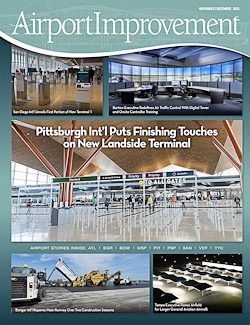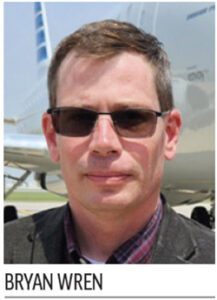
They say everything’s bigger in Texas. And although bigger isn’t always better, it’s definitely a good thing at Valley International Airport (HRL) in Harlingen, TX. The airport’s recently extended 17R-35L runway is now the biggest—longest—runway in South Texas and one of the most technologically advanced in the United States. At 9,400 feet, it provides big benefits for the cargo haulers and airlines that use the Rio Grande Valley airport. Another, more minor, change: The runway is now designated 18R-36L to reflect slight magnetic shifts over the last few years.
Back in 2019, HRL noticed it was missing out on cargo capacity because FedEx and DHL aircraft were departing with only 40% of their available load factor. With three runways, the longest of which was only 8,300 feet long, standard operating procedures wouldn’t allow the widebody 767s to take off with more weight.
“We knew we had a need for a runway extension,” explains Assistant Aviation Director Bryan Wren. “There had been a 40-year battle with the two other commercial airports within 30 miles of us about who was going to do the runway extension first. Now, we realized we actually had a justified need.”
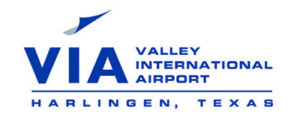 facts&figuresProject: Runway Extension & ImprovementsLocation: Valley Int’l Airport, in Harlingen, TXOwner/Operator: City of HarlingenScope: Extended Runway 35L from 8,400 ft. to 9,400 ft.; installed north & south flow CAT II ILS approach systemTotal Est. Cost: $35 millionFunding: 80% Airport Improvement Program; 20% passenger facility chargesProject Timeline: Dec. 2022–July 2024Design/Engineering: RS&H Resident Project Representative/Construction Manager: Davika Construction LLC Primary Contractor: Foremost Paving Inc. Runway Lighting & Power Design: RS&H/Ferguson Storm Sewer Design: RS&H Utilities & Site Design: RS&H Navigational Aids: RS&H Electrical/Lighting: Hypower Geotechnical & Quality Assurance: Terracon NavAid Systems Installed: Localizer, glideslope, DME, PAPI, RVR, MALSR, CAT II ILS approach system Hot Mix Asphalt Concrete: 23,179 tons Drainage Reinforced Concrete Pipe: 6,718 ft. Fiber Optic Cable: 6.45 miles Airfield Addition: 81.8 acres Unclassified Excavation: 53,182 cu. yd. Ground Rods: 600+ Noteworthy Details: All nav aids are tied into fiber optic transmission line; adding north & south CAT II ILS approaches required complex design; after project was complete, parallel runways 17R and 17L were named 18R Project: New Air Traffic Control Tower Location: Valley Int’l Airport, in Harlingen, TX Total Est. Cost: $20 million Funding: FAA Airport Terminals Program; Airport Improvement Program; passenger facility charges Projected Timeline: Sept. 2024–June 2026 Tower Height: 120 ft. Size of Cab: 450 sq. ft. Architect of Record: RS&H Design Architect: Megamorphosis Structural Design/Engineering: RS&H Construction Contractor: Out for bid Remote Tower Provider: Robinson Aviation Inc. (RVA) Noteworthy Detail: Controllers will operate out of temporary remote tower while crews build new tower on same site as existing tower |
Expansion and Upgrades
Wren and his project team wasted no time running a cost-benefit analysis to secure FAA buy-in. The resulting 1:3 ratio busted the 1:1 ratio needed to move forward with an environmental assessment, which was completed in just six months.
The plan was to extend Runway 17R-35L by 1,100 feet on the south end, creating a 9,400-foot option for airport users. In particular, the added length would allow cargo haulers to increase their capacity to 70% of the maximum gross takeoff weight—generally the most they carry to avoid decreasing aircraft longevity.
Project leaders also opted to make HRL the first airport in the United States to tie all of its nav aids into a fiber optic transmission systems line: the remote transmitter/receiver (RTR), runway visual ranges, both instrument landing systems, the VHF omnidirectional range (VOR) and distance measuring equipment. “We’re 100% on fiber now,” Wren reports proudly. “There’s no more copper on this airfield. We’re one of the most technologically advanced airports in the nation at the moment.”
Next came vertical guidance surveys and land acquisition for a protection zone beyond the end of the runway.
“We were able to do all of that within about an 18-month period, which is fairly quick,” Wren says, noting that many airports take three to five years for such prerequisites. During this time, HRL leaders also created a plan to fund the $35 million project over a two-year construction period. The FAA picked up about 80% of the cost, with airport passenger facility charges covering the remainder.
Tech-Driven Safety Boost
Although expanding cargo capabilities was a huge win, Wren says the biggest benefit of the project is increasing the safety margin for every aircraft that takes off and lands at HRL with a special authorization Cat II ILS for north and south flow. “That is absolutely huge for precision landings and landings in inclement weather, because it gets the planes lower and closer to the runway,” Wren explains. As such, the upgrade is expected to reduce diversions, cancellations and delays.
Beyond facilitating better cargo business, HRL leaders are also keeping an eye on commercial airline growth. The airport has experienced an 80% increase in passenger traffic since 2019—jumping from 265,000 enplanements to more than 550,000 in 2023. That growth spurred a $20 million project to build a 120-foot air traffic control tower that will replace the airport’s current tower, which is more than 50 years old and only 44 feet tall. (See sidebar on Page 41 for more details.)
Cleared for Construction
Construction on the runway extension project began at the end of 2022 with perimeter road and drainage projects, and is due to wrap up this July (2024).
While many runway projects of this size and complexity take five to 10 years, HRL is finishing at a record pace with nearly no change orders. Wren’s internal team together with project engineer RS&H, construction manager Davika Construction and prime contractor Foremost Paving Inc. say their secret sauce was collaboration, communication and a clear direction.
Glynn Forshage, project manager with Foremost Paving, credits open communication and quick decision-making for facilitating his stage of the project. “Everyone involved made it so easy,” he says. “We got quick responses back, not only from Bryan [Wren], but from the airport’s engineering team and RS&H. Anytime we had something that needed to be figured out quickly, they make it a priority; and we were able to keep moving.”
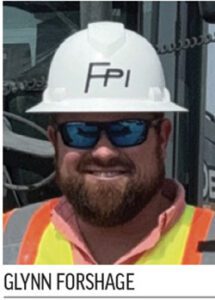 Forshage says that working with Florida-based Hypower, the electrical subcontractor that installed the nav aids and fiber optic line, was a breeze. “They just took the ball and ran with it,” he says. “They’re a top-shelf outfit and almost operated as if they were doing their own project.”
Forshage says that working with Florida-based Hypower, the electrical subcontractor that installed the nav aids and fiber optic line, was a breeze. “They just took the ball and ran with it,” he says. “They’re a top-shelf outfit and almost operated as if they were doing their own project.”
The company also had a lot of experience working with the FAA, which was key because HRL signed a reimbursable agreement to turn all nav aids back over to the FAA once the project was complete. To meet all specifications for that takeover, the team kept open dialogue between the FAA and the project engineers. “Because we were such a well-knit group, before there became any design issues, everybody was already aware of them,” notes Wren.
The project shut down the three-runway airport’s only instrument landing system for 18 months. But Wren had prepared for that, too. A few years ago, when HRL participated in FAA’s Airport Geographic Information Systems (GIS) program, Wren had flight procedures provide all GPS approaches to every runway end. So even without an ILS online, it was safe and easy for aircraft to get in and out, he explains.
No Bumps in the Road (or Runway)
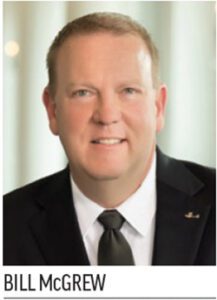 “One thing you continually hear about this project is how the timeframes were shorter than anticipated,” says RS&H Project Director Bill McGrew. “I have to give credit to the Harlingen Airport staff. They are extremely progressive and energetic, and it spreads to the entire team. You get the feeling like nothing is impossible when you’re working with them.”
“One thing you continually hear about this project is how the timeframes were shorter than anticipated,” says RS&H Project Director Bill McGrew. “I have to give credit to the Harlingen Airport staff. They are extremely progressive and energetic, and it spreads to the entire team. You get the feeling like nothing is impossible when you’re working with them.”
Wren concurs, adding that the goal to streamline the project is to avoid delays. “It was a top priority for everybody, and, more importantly, everybody worked together—especially out in the field.”
“For a project of this complexity, the level of coordination was truly amazing,” agrees David Wolf, resident project representative/construction manager with Davika Construction. “It’s truly astounding to see how many moving parts are so well coordinated—mostly by Bryan [Wren]. He’s always five steps ahead of everybody else.”

“This program was and continues to be extremely complicated,” adds Sean Brennan, a senior aviation engineer with RS&H “There are a lot of moving parts and pieces. The level of coordination—not only in the beginning and during design—but continual coordination between the FAA, the tech ops, the field staff, the airport and the contractors—is quite impressive, to say the least.”
Wolf says periodic design review milestones with the whole team also contributed to the success. “Everybody was able to give their input and actually talk to each other without arguing,” he recounts. Wolf also credits RS&H’s expertise and familiarity with the airport as essential to getting the job done. “RS&H has had multiple projects out here, especially at that part of the airfield. They are very familiar with the soils and materials that we have available and understand the way that we’ve built the rest of this airport, and how everything ties together,” he explains. “I think they did a wonderful job of taking that prior information and leveraging it.”
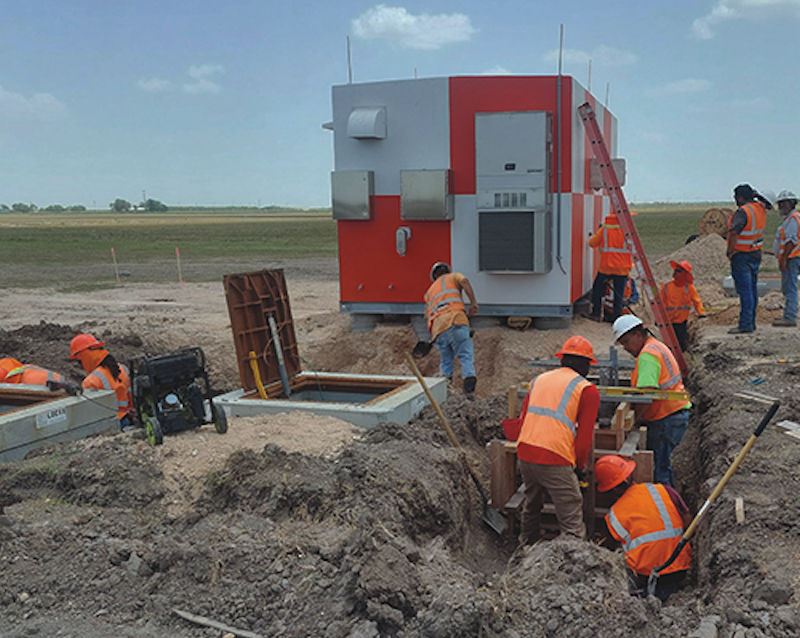
The team advises any airport planning a runway or tower project to brush up on FAA advisory circulars and agency hierarchy. Brennan emphasizes the importance of having a clear idea about the desired outcome before jumping into the design. “Without that vision going into this, the program could have fallen apart on several different occasions,” he reflects. “So, make sure you know what you want, and have a plan in place to move forward.”
Wren is more than pleased that HRL will complete the runway and tower projects without costing taxpayers a penny, and without taking on any debt.
But he wouldn’t necessarily advise tackling both types of projects at the same time. “I didn’t have gray hair when all this started. And now I do,” he jokes.
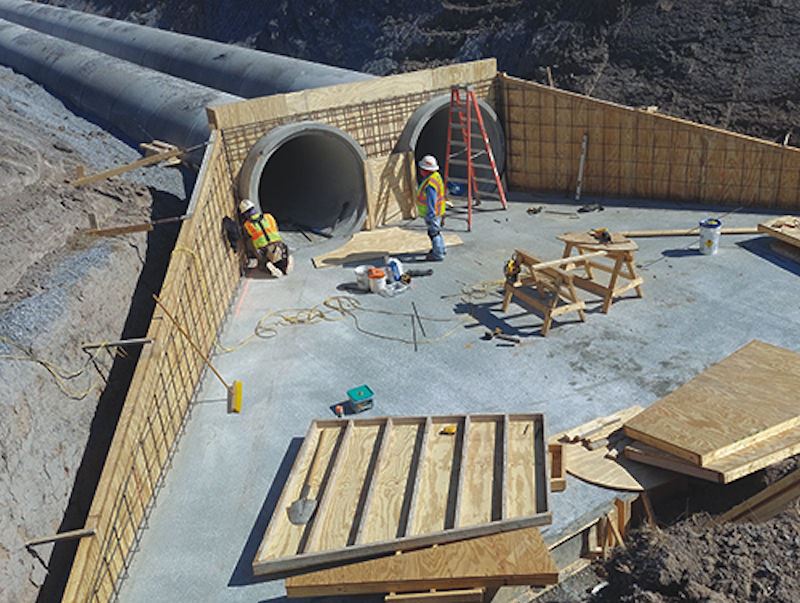
| New Air Traffic Control Tower Designed with the Future in MindIn addition to its recent runway extension project, Valley International Airport (HRL) also has a $25 million air traffic control tower project underway. Because the new 120-foot structure will be built in the existing tower’s location, the airport plans to use a mobile tower from Robinson Aviation Inc. during construction. Robinson also provides the air traffic control personnel at HRL. 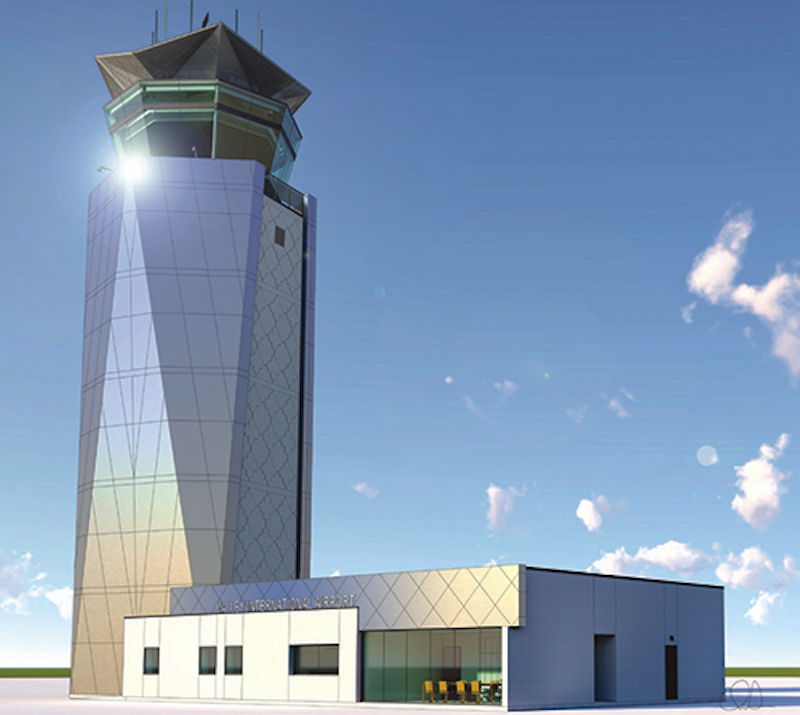 In early July, design for the new tower was complete, and the temporary tower was set up and ready for action after the planned Sept. 1 switchover. The remote tower is about the size and shape of a fifth-wheel trailer, with a tower cab on top of the front that is big enough for two controllers to work inside together. The lower back side of the mobile tower houses computers and communications equipment. As soon as control operations begin in the remote tower, crews will start leveling the existing tower. Construction is scheduled to be complete in March 2026. In early July, design for the new tower was complete, and the temporary tower was set up and ready for action after the planned Sept. 1 switchover. The remote tower is about the size and shape of a fifth-wheel trailer, with a tower cab on top of the front that is big enough for two controllers to work inside together. The lower back side of the mobile tower houses computers and communications equipment. As soon as control operations begin in the remote tower, crews will start leveling the existing tower. Construction is scheduled to be complete in March 2026.
Impetus for the project was twofold. First, the airport’s tower needed to be tied into its new fiber optic system. Second, the existing tower is only 44 feet tall. With the recently completed runway extension, controllers needed more elevation to avoid major line-of-sight issues. Bryan Wren, assistant director of Aviation for HRL, notes that building a control tower is typically a once-in-a-lifetime project for an airport—and doing so during a runway extension is practically unheard of. The team selected RS&H as the architect of record, and Megamorphosis, a local firm that had performed other work at the airport, was named as design architect as part of that team. Megamorphosis architect Chris Sias, who was charged with the design, quickly got up to speed on the attendant FAA advisory circulars, specifications and mandates. He also met with FAA personnel and air traffic controllers to inform his design.
When designing it, Sias was inspired by other projects happening at HRL to accommodate growth. “The tower itself is a visual culmination of all this forward thinking,” he explains. “We wanted the design to celebrate the culture of Valley International Airport and to reflect its place geographically in South Texas, as well as its place in time with a nod to the future.” Sias selected two primary materials for the tower. For the exterior of the tower, Sias selected a reflective sheet metal panel system that’s indicative of place. “Airplanes are made out of aluminum sheets, and it’s a steel structure that emulates this technological language of airplanes,” he explains. The sheets change color depending on the time of day—transitioning from gray to a deep blue found in the airport’s logo. The rest of the exterior is stucco plaster, with the same quatrefoil pattern found on the terminal building. A sculptural element at the top of the tower shields/protects the mechanical equipment and serves as an architectural crown. It’s also a design nod to HRL’s logo, which includes a paper airplane. “The logo has an origami effect,” Sias explains. “We were inspired by the idea of folding a paper airplane to create the sculptural element, so that when you look at it from just the right angle, you might be reminded of the airport’s logo.” HRL opened construction bids July 10 and hopes to start construction Sept. 1. In preparation, crews performed a siting study for the temporary remote tower. Although this is a standard preliminary step, FAA added a modern twist by contracting a virtual reality siting so controllers could look through special goggles and see what it would look like working from the mobile tower.
Technology was also leveraged to design the unusual structure, which has a square base that transforms into a hexagon as it rises to the cab. “Because the tower has some unique geometry, it created a bunch of headaches for our structural engineer,” Sias says. Chris Rhodes, RS&H structural engineer for the project, took the extra precaution of having a small-scale model of the tower run through a wind tunnel testing facility in Colorado. Sias notes that the extra testing helped optimize the design and reduced the amount of steel that was specified. The shift from the existing tower to the remote tower is scheduled to occur over several days in August. To ensure a smooth transition, one controller will operate in the mobile tower while another works simultaneously in the old tower for a day or two. After the controllers are comfortable that all systems are working properly, they will switch exclusively to the remote tower so crews can begin tearing down the existing tower. “If we didn’t have an option like these mobile towers, airports would have to stop operations when they rebuild towers,” notes Bourgeois. “And nobody wants that to happen.” He adds that with the number of upgrades happening at airports today, Robinson Aviation is proud to team up with the FAA to help airports stay operational and prevent disruptions. |

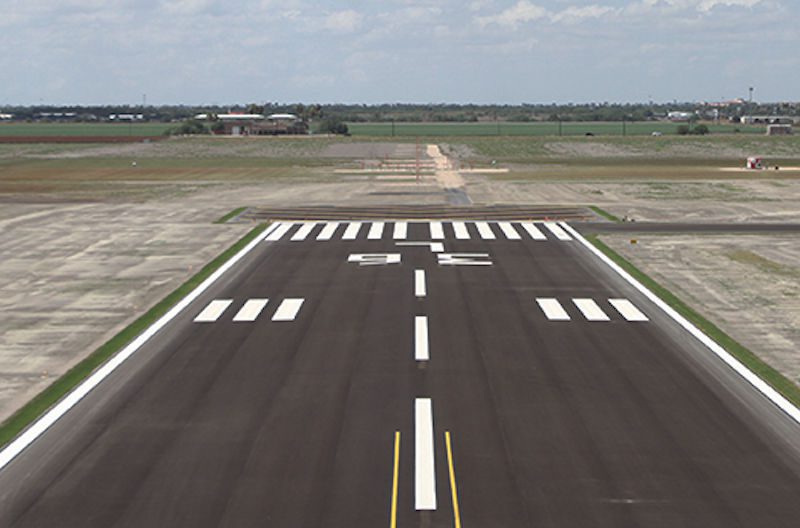
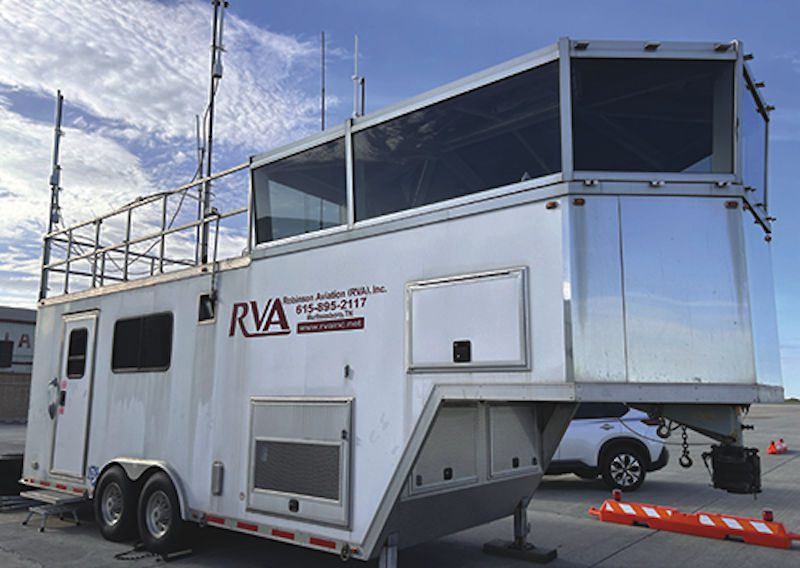
 The result garnered positive attention from Davika Construction, construction manager for the overlapping runway project. David Wolf, the firm’s resident project representative/construction manager compliments Sias for meeting all the stringent FAA requirements without turning the tower into a big Lego block or concrete cylinder. “It really is gorgeous,” says Wolf. “The architecture on it is commendable.”
The result garnered positive attention from Davika Construction, construction manager for the overlapping runway project. David Wolf, the firm’s resident project representative/construction manager compliments Sias for meeting all the stringent FAA requirements without turning the tower into a big Lego block or concrete cylinder. “It really is gorgeous,” says Wolf. “The architecture on it is commendable.”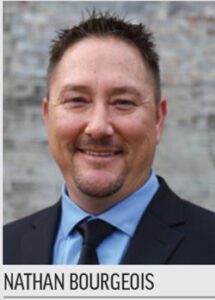 Because controllers will operate out of the remote tower for 18 to 24 months, the project team also chose to move 100% of the tower’s nav aid equipment into the remote tower. Typically, mobile towers are outfitted with binoculars and radios because they’re meant to temporarily bridge a gap. “Most of the time, in a remote tower, the air traffic controllers don’t have that much equipment,” explains Nathan Bourgeois, division manager of Aviation Services for Robinson Aviation. “But, in this case, they’ll be able to operate at the same level and capacity they’re used to.”
Because controllers will operate out of the remote tower for 18 to 24 months, the project team also chose to move 100% of the tower’s nav aid equipment into the remote tower. Typically, mobile towers are outfitted with binoculars and radios because they’re meant to temporarily bridge a gap. “Most of the time, in a remote tower, the air traffic controllers don’t have that much equipment,” explains Nathan Bourgeois, division manager of Aviation Services for Robinson Aviation. “But, in this case, they’ll be able to operate at the same level and capacity they’re used to.”